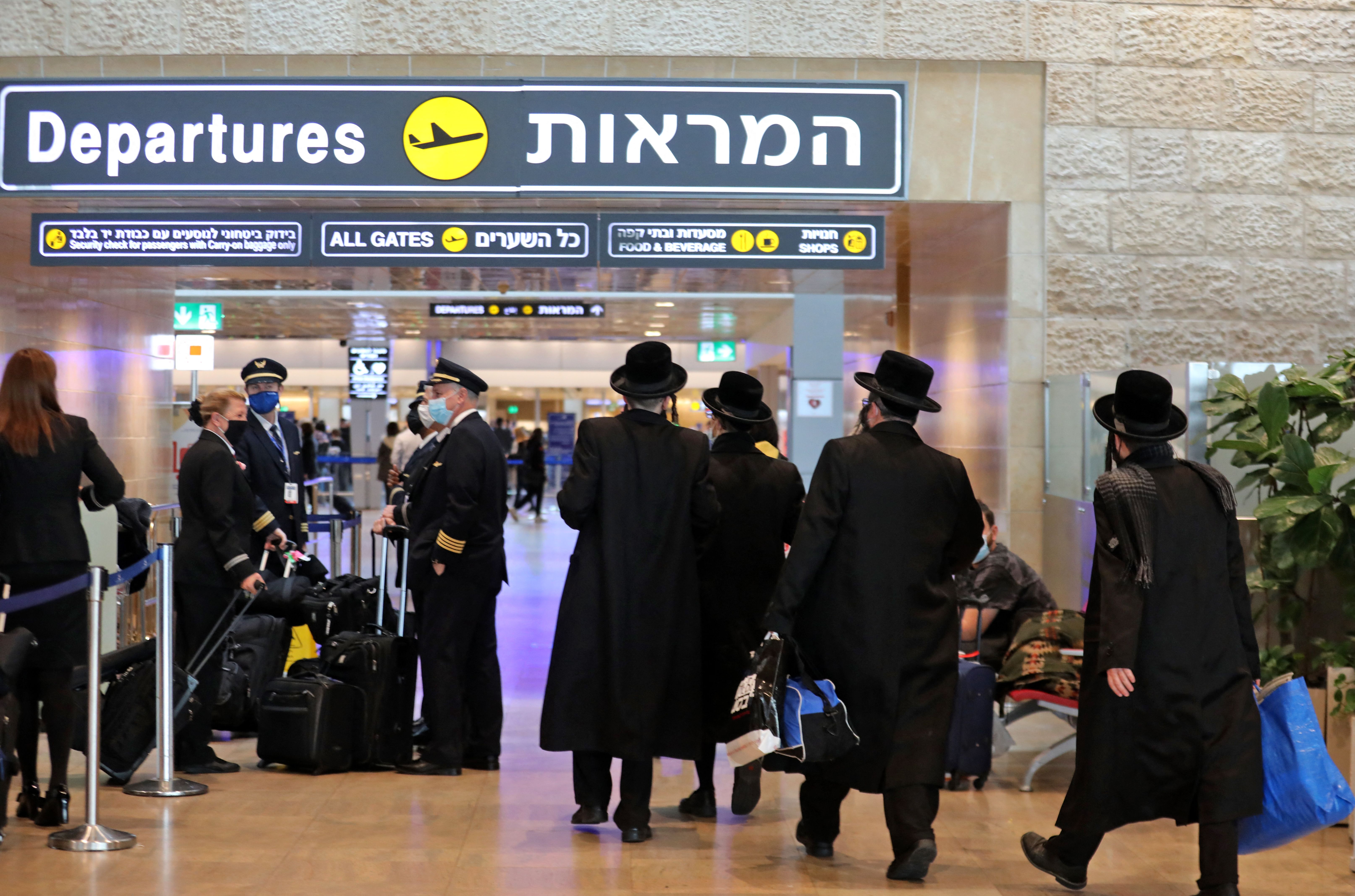‘Leaving the Country — Together’: Why are Thousands of Jews Fleeing the Israeli Occupation?

The Hebrew media is still interested in highlighting new immigrants appearing from time to time on the stairs of planes waving white and blue flags and victory signs with red carpets laid for them on the airport floor to pass by, cheering to the beat of Jewish songs.
These media scenes increased in frequency following the Russian invasion of Ukraine in February 2022, when the Israeli Occupation signaled its willingness to bring in every Jew from both Russia and Ukraine, two countries that are home to large Jewish communities.
In scenes that seemed to repeat history, a large number of Jews actually flocked, recalling the million Jews who landed in the occupied territories throughout the nineties after fleeing the collapsed Soviet Union.
They were credited with changing the social and economic composition of the Israeli Occupation, as well as bringing about a political shift toward the right, which today has reached the highest levels of power, paradoxically exacerbating the phenomenon of reverse migration from “Israel,” as new immigrants leave their country, which has long prided itself on its ability to attract and contain them.
Reverse Migration
By the end of 2022, the Jewish Agency, the world’s largest organization for Zionist activity in support of “Israel,” accelerated the publication of data on the number of new immigrants who arrived in “Israel.”
It boasted that the country received the largest number of immigrants this year in 23 years, as 70,000 new immigrants arrived in the Israeli Occupation, mostly from Russia and Ukraine, a significant increase compared to 2021, in which it received only about 28,000 new immigrants.
Under the Israeli “Law of Return,” every Jew around the world can obtain Israeli “citizenship” as soon as they immigrate to “Israel,” but those numbers remain large and short of the expectations of Israeli officials, given that there are more than 200,000 Jews in Ukraine and more than half a million in Russia who are eligible to immigrate under this law and remain in their home countries.
However, the problem of the Israeli Occupation is not those Jews who wish to stay in “their” countries or move toward Europe or North America, but in what is known in Hebrew as “Yordim,” meaning “decline” or “descent,” a term used by Israelis to describe Jews who leave the “Jewish state” after immigrating to it earlier.
At a time when the Ukrainian war continues, and hundreds of Jews are arriving on government-funded flights to “Israel,” receiving financial aid to help them live there, and staying in Israeli hotels at state expense until they find permanent housing, hundreds are deciding to return to their hometowns, where they still have relatives and jobs.

Extreme Government
Israeli statistics revealed that two months after the start of the Ukrainian war, about 1,800 Russian Jews out of 5,600 who benefited from the “Law of Return” returned to Moscow with their Israeli passports.
This means that one-third of the Russian Jews who arrived in “Israel” were quick to leave.
Following last November’s election, which resulted in the inauguration of the most extreme government in the Israeli Occupation’s history, Israelis have grown in demand for European citizenship, with the highest rate of Israelis applying for French citizenship, up 13 percent.
There was also an increase in the proportion of immigration applications to EU countries in general, with authorities in Portugal recording a 68% increase in citizenship applications from Israelis, and Polish and German authorities recording a 10% increase in the same applications over the past two months.
Since the establishment of the Israeli Occupation in the forties, reverse immigration has been an observed phenomenon, with 10% of Jewish immigrants leaving between 1948 and 1950.
This prompted the Israeli government to enact strict restrictions by imposing an exit visa application that was often denied to Israeli applicants.
Despite these restrictions, 100,000 immigrants left by the tenth anniversary of the founding of the Israeli Occupation in 1958, and by 1967 more than 180,000 Israelis had emigrated, despite the continued obstacles placed in the way of those who wanted to emigrate by the Occupation government.
During the seventies, fears of war, stagnation, and Palestinian–Arab resistance led to a sharp decline in immigration to “Israel” to the point that the Jewish Agency then closed three immigration centers in the United States.
The reasons Jews returned to where they came from were frustrated by security concerns, housing and economic problems in “Israel,” and difficulty integrating into a society that “Israel” has always claimed to be interconnected.

Leaving Together
An Israeli–American businessman, Mordechai Kahana, is currently active in driving Jews out of “Israel” and is one of the founders of the “Leaving the Country – Together” movement.
The movement plans to transfer thousands of Israeli Jews to the United States and was formed in response to the recent coming to power of Prime Minister Netanyahu and his religious right extremist ministers.
Netanyahu’s men, on the other hand, quickly began serious talk about the need to work on changing Israeli immigration policy even before they officially came to power to tighten the procedures required to obtain “citizenship” so that it does not become so accessible that the owners leave easily after holding passports.
Netanyahu’s allies have therefore demanded radical changes to the “Law of Return” and the reopening of the issue of defining “Jewish” under the pretext of “preserving Israel as a Jewish state.”
Apparently, the so-called “Jewish Law of Return,” passed in 1950, ensured the immigration of anyone capable of proving the existence of at least one Jewish ancestor to the occupied territories, has now become a problem threatening the Israeli Occupation.
Avi Maoz, head of the ultra-nationalist Naoum party, said that the law is “a door absurdly used to bring pagans into the State of Israel, and to systematically reduce the proportion of Jews in the state.”

This problem first came to light after the immigration of more than a million Soviets to “Israel” in the nineties, some of whom are still effectively Orthodox Christians, which means that proving the existence of a Jewish ancestor was a legal argument for leaving Russia for a country with easy “citizenship,” without the applicant necessarily being Jewish.
The onslaught of religious Zionism on the existing immigration policy comes at a time when figures from the Israeli Central Bureau of Statistics reveal the worsening phenomenon of “unreal Jews” immigration to the Israeli Occupation.
Data indicates that 72% of those who immigrated to “Israel” from the former Soviet Union countries under the “Law of Return” in 2020 were not Jews, while of the 180,000 immigrants who have arrived in “Israel” since 2012, only 25,375 are Jews (about 14% of the total immigrants).
Overall, the percentage of genuine Jews who immigrated to “Israel” under the “Law of Return” declined steadily from 93% in 1990 to 28% in 2020.
Therefore, the Israeli Occupation faces a double problem, an increase in the percentage of non-Jewish immigrants or unreal Jews, with the exacerbation of the phenomenon of Jewish immigration from the occupied territories, which strikes one of the solid foundations on which the occupying power was founded in death.










